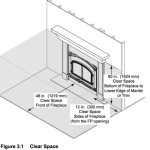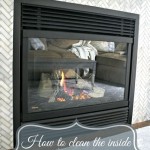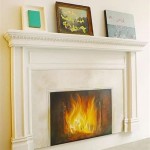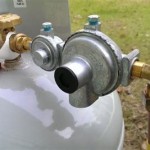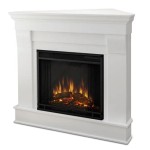Stone Veneer for Fireplace: A Comprehensive Guide
Fireplaces serve as focal points in homes, providing warmth, ambiance, and aesthetic appeal. The design and materials used for a fireplace significantly impact its overall appearance and contribution to the room's character. Stone veneer has emerged as a popular choice for fireplace facings due to its versatility, cost-effectiveness, and ability to replicate the look of natural stone. This article provides a comprehensive overview of stone veneer for fireplaces, covering its types, installation considerations, benefits, and maintenance.
Understanding Stone Veneer
Stone veneer is a lightweight manufactured product designed to mimic the appearance of natural stone. It is typically composed of a mixture of cement, aggregates, and pigments, molded and colored to resemble various types of natural stone, such as limestone, granite, fieldstone, and river rock. Stone veneer is significantly lighter than natural stone, making it easier to handle and install, and requiring less structural support. It is available in a variety of shapes, sizes, and colors, allowing for diverse design possibilities.
There are primarily two types of stone veneer: manufactured stone veneer and natural thin stone veneer. Manufactured stone veneer, as described above, is a man-made product. Natural thin stone veneer consists of actual thin slices of natural stone adhered to a backing material. Both options provide the aesthetic benefits of stone without the weight and cost associated with full-thickness natural stone.
The popularity of stone veneer stems from its ability to transform ordinary fireplaces into stunning architectural features. Its adaptability to different design styles makes it a favored choice for both modern and traditional homes.
Benefits of Using Stone Veneer for Fireplaces
Opting for stone veneer for a fireplace project yields several significant advantages.
Cost-Effectiveness: Stone veneer is generally more affordable than natural stone. The lower material cost, combined with reduced labor costs due to easier installation, makes it a budget-friendly option for homeowners seeking a stone fireplace aesthetic.
Ease of Installation: The lightweight nature of stone veneer simplifies the installation process. It does not typically require specialized equipment or extensive structural modifications, making it suitable for DIY projects (for those with appropriate experience) or professional installations that are quicker and less disruptive.
Versatility in Design: Stone veneer is available in a wide range of styles, colors, and textures. This allows homeowners to customize their fireplaces to match their specific design preferences and complement the overall décor of their homes. Whether a rustic, contemporary, or classic look is desired, there is likely a stone veneer option to achieve it.
Durability and Longevity: High-quality stone veneer is durable and resistant to weathering and wear. It is designed to withstand the heat generated by a fireplace and maintain its appearance for many years with proper maintenance. The color is typically integrated throughout the material, minimizing fading over time.
Increased Home Value: A well-designed fireplace with stone veneer can enhance the aesthetic appeal of a home and increase its market value. It is often considered a desirable feature by potential buyers.
Installation Considerations for Stone Veneer Fireplaces
Proper installation is crucial for ensuring the longevity and visual appeal of a stone veneer fireplace. While some experienced DIYers may undertake the project, professional installation is generally recommended for optimal results. Several key considerations should be taken into account.
Surface Preparation: The surface onto which the stone veneer will be applied must be clean, level, and structurally sound. Depending on the existing surface, this may involve applying a scratch coat of mortar to create a rough surface for better adhesion. In some cases, metal lath may be required to provide additional support and a bonding surface.
Adhesive Selection: Choosing the appropriate adhesive is essential for ensuring a strong and lasting bond between the stone veneer and the substrate. Mortar specifically designed for stone veneer application is typically recommended. The adhesive should be compatible with both the veneer material and the underlying surface. Follow the manufacturer's instructions carefully for mixing and application.
Cutting and Shaping: Stone veneer often needs to be cut to fit around openings, corners, and other architectural features. A wet saw with a diamond blade is the preferred tool for cutting stone veneer. This provides clean cuts and minimizes dust.
Pattern and Layout: Before beginning the installation, it is advisable to lay out the stone veneer to determine the desired pattern and arrangement. This allows for adjustments to ensure a visually appealing and balanced look. Mixing stones from different boxes helps to create a more natural and varied appearance.
Mortar Joints: The mortar joints between the stones play a significant role in the overall appearance of the fireplace. The width and color of the mortar joints can be customized to achieve different effects. Several mortar joint styles are common, including tooled joints, flush joints, and raked joints. Grouting is typically required after the stone veneer has been applied.
Clearances from Combustible Materials: Adhering to all relevant building codes and safety regulations regarding clearances from combustible materials is vital. Fireplace inserts and stoves require specific clearances to prevent overheating and potential fire hazards. Consult with local building officials or a qualified fireplace installer to ensure compliance.
Ventilation: Ensure adequate ventilation around the fireplace. Restricting airflow can lead to overheating and inefficient combustion. Proper ventilation also helps to prevent the buildup of carbon monoxide.
Types of Stone Veneer Suitable for Fireplaces
The selection of stone veneer for a fireplace is largely dependent on the desired aesthetic and the overall style of the home.
Ledgestone: Ledgestone veneer features long, narrow, and thin pieces of stone arranged horizontally. This style creates a textured and layered look, suitable for both modern and rustic designs.
Fieldstone: Fieldstone veneer replicates the look of naturally weathered stones collected from fields. It is characterized by irregular shapes and sizes, providing a rustic and organic appearance. Fieldstone is often used in traditional or country-style homes.
River Rock: River rock veneer consists of smooth, rounded stones that resemble those found in riverbeds. This style adds a natural and calming element to a fireplace. It is suitable for coastal or contemporary designs.
Brick Veneer: While not strictly stone, brick veneer offers a similar aesthetic and installation process. It is a classic choice for fireplaces, providing a traditional and timeless look. Brick veneer is available in various colors and textures.
Stacked Stone: Stacked stone veneer features stones arranged in a tight, vertical format, creating a textured and three-dimensional effect. This style is often used in modern or contemporary homes.
Limestone: Limestone veneer offers a clean and elegant appearance with its smooth surface and subtle color variations. It is suitable for formal or contemporary designs.
Maintaining a Stone Veneer Fireplace
Proper maintenance is essential for preserving the beauty and longevity of a stone veneer fireplace.
Regular Cleaning: Dust and debris can accumulate on the surface of the stone veneer over time. Regularly dusting or vacuuming the fireplace surround helps to maintain its appearance. A soft brush or cloth can be used to remove loose dirt. For more stubborn stains, a mild detergent diluted in water can be used. Avoid using harsh chemicals or abrasive cleaners, as these can damage the stone veneer.
Sealing: Applying a sealant to the stone veneer can help protect it from moisture and stains. A penetrating sealant is recommended, as it will not alter the appearance of the stone. Sealing is particularly important in areas with high humidity or where the fireplace is exposed to water.
Mortar Joint Inspection: Periodically inspect the mortar joints for cracks or damage. Repair any damaged mortar joints promptly to prevent water from penetrating behind the stone veneer. Use a mortar patching compound that matches the color of the existing mortar.
Efflorescence Removal: Efflorescence, a white, powdery substance that can appear on the surface of stone veneer, is caused by the migration of salts to the surface. Efflorescence can be removed with a stiff brush and a solution of water and vinegar. In severe cases, a commercial efflorescence remover may be necessary.
Professional Inspection: Have the fireplace and chimney inspected annually by a qualified professional to ensure they are in good working condition. This includes checking for any structural issues, creosote buildup, or other potential hazards.

11 Stone Veneer Fireplace Surround Design Trends Where To Buy

Natural Stacked Stone Veneer Fireplace Ideas

Thincut Natural Stone Veneer Csi All Things Can En

Weathered Stone Veneer Natural Thin Cape Cod Nantucket Ma

Thin Stone Veneers Make A Fireplace Update Easy Swenson Granite 100 Natural Stones

The Benefits Of Thin Stone Veneer For Your Fireplace

Stone Veneer Fireplace Ideas That Will Warm Up Your Home Ply Gem

Stone Veneer Interior Design Living Room Kitchen Bedroom Ideas More Buechel

Natural Stone Veneer For Living Room Fireplace Erth Coverings

11 Stone Veneer Fireplace Surround Design Trends Where To Buy
Related Posts


